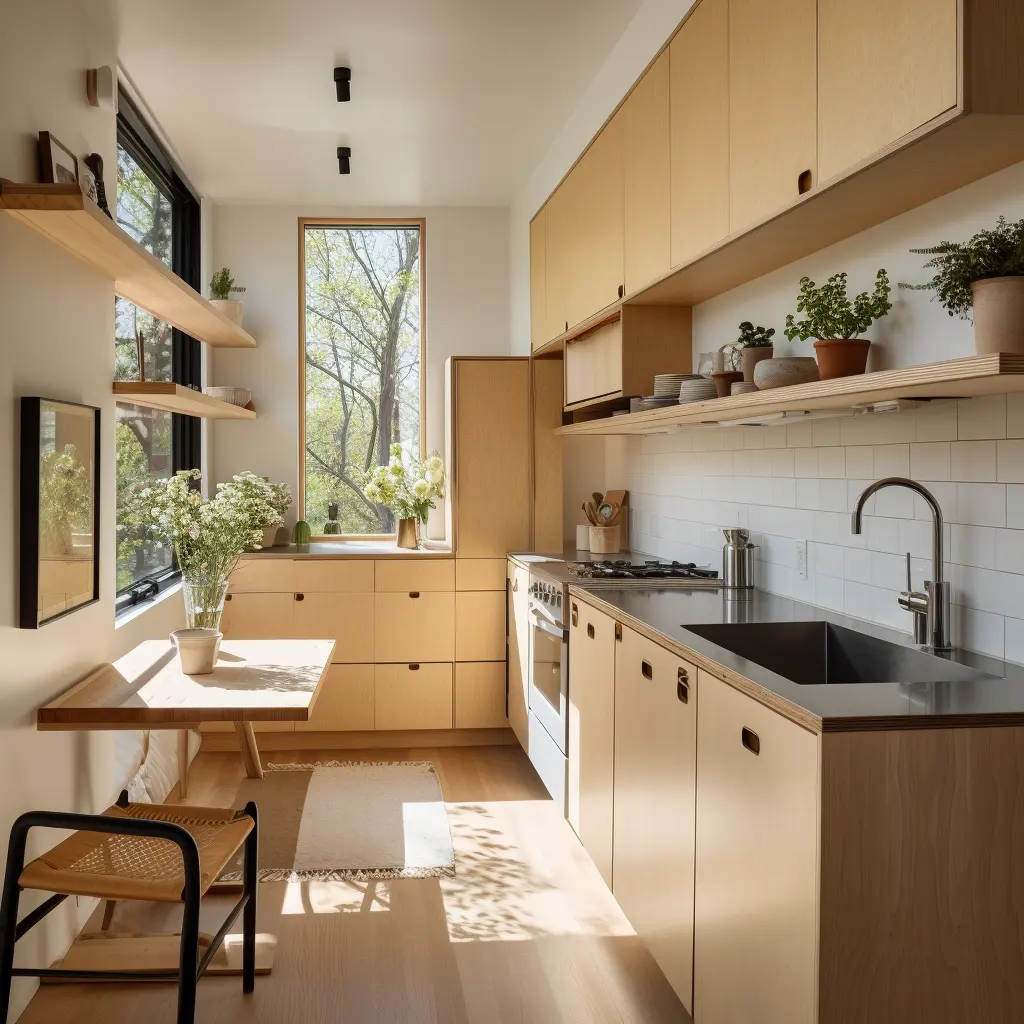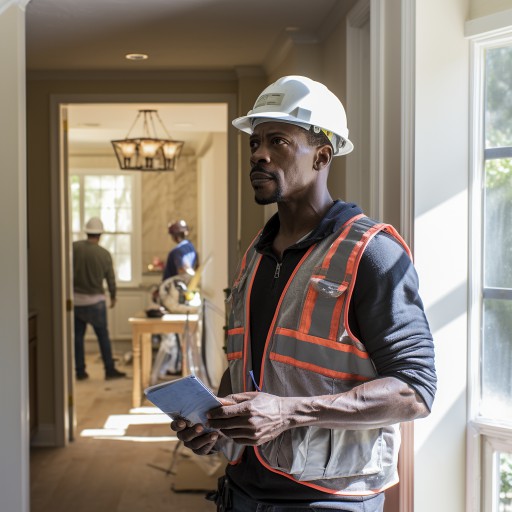How Long Does It Take to Fully Build a House?

co-founder
- Part 1: Stages of the Home Building Process
- Part 2: Factors That Affect the Home Building Timeline
- Weather
- Contractor Availability
- Permits and Inspections
- Change Orders
- Customization
- Size and Complexity
- The Takeaway? The Average Home Building Timeline
Building a house is a complex process, with a ton of factors contributing to the overall timeline. Understanding the various stages, potential delays, and factors that can impact the duration of your home-building project can help set realistic expectations and ensure a smoother experience. In this comprehensive article, we'll explore how long it takes to fully build a house and the factors that influence the process.
Part 1: Stages of the Home Building Process
Pre-Construction Planning (2-4 months)
Before breaking ground, you'll need to invest time in planning, budgeting, and securing financing. This stage involves researching builders, architects, and designers, selecting a site, and finalizing your floor plan. You'll also need to obtain necessary permits and ensure your plans comply with local building codes and regulations.
Site Preparation and Foundation Work (1-2 months)
Once planning is complete and permits are in place, the construction process begins with site preparation. This phase includes clearing the land, leveling the ground, and excavating for the foundation. The type of foundation (slab, crawl space, or basement) and weather conditions can impact the duration of this stage.
Framing and Structural Work (1-3 months)
Framing establishes the skeleton of your home, including walls, floors, and the roof structure. This stage also involves installing windows, exterior doors, and sheathing. The size and complexity of your home, as well as the framing method (stick-built, panelized, or modular construction), can influence the time required for this stage.
Roofing, Siding, and Exterior Finishes (1-2 months)
With the frame in place, the next step is to install the roof, siding, and other exterior finishes like stucco or brick. Proper installation is crucial to protect your home from the elements and ensure energy efficiency.
Plumbing, Electrical, and HVAC (1-2 months)
During this stage, professionals install the essential systems of your home, including plumbing, electrical wiring, and heating, ventilation, and air conditioning (HVAC) systems. Coordination between various trades is critical to avoid delays and ensure proper installation.
Insulation and Drywall (2-4 weeks)
Insulation is installed in the walls, floors, and ceilings, followed by the hanging of drywall. After the drywall is installed, it must be taped, mudded, sanded, and primed before painting. This stage can be time-consuming, as drying times between steps must be observed.
Interior Finishes (1-2 months)
Interior finishes include installing cabinetry, countertops, flooring, baseboards, and trim. Painters complete the walls and ceilings, while plumbers and electricians return to install fixtures, outlets, and switches. The timeline for this stage depends on the complexity and level of customization in your home.
Landscaping and Exterior Work (1-2 months)
The final stage involves completing exterior work such as driveways, walkways, and landscaping. These elements enhance curb appeal and make your home more functional and visually appealing. The scope of your landscaping and exterior work, as well as weather conditions, can impact the duration of this stage.
Part 2: Factors That Affect the Home Building Timeline
Weather
Adverse weather conditions can delay various stages of construction, such as site preparation, framing, and exterior work. Rain, snow, and extreme temperatures can hinder progress, so it's essential to account for seasonal factors when planning your home building timeline.
Contractor Availability
The availability of your builder, subcontractors, and suppliers can influence the timeline. Busy contractors may have less time to devote to your project, leading to potential delays. Careful scheduling and communication can help mitigate this risk.
Permits and Inspections
Acquiring permits and passing inspections can be time-consuming, causing delays in your home building process. Work closely with your builder and architect to ensure your plans meet local building codes and regulations, which can expedite the permitting and inspection process.
Change Orders
Making changes to your plans during construction can significantly impact your timeline. While some modifications are unavoidable, try to finalize your design and material choices before construction begins to minimize delays and additional costs.
Customization
A higher level of customization and unique design elements can extend the time required to complete your home. Custom finishes and intricate details may necessitate specialized skills and additional time to perfect, so consider these factors when estimating your home building timeline.
Size and Complexity
The size and complexity of your home will directly influence the duration of construction. Larger homes with more rooms and intricate designs will require more time to complete than smaller, simpler homes.
The Takeaway? The Average Home Building Timeline
On average, it takes approximately 7 to 12 months to build a house from start to finish. This timeline includes pre-construction planning, construction, and finishing work. However, it's crucial to remember that every project is unique, and factors such as weather, contractor availability, permits, and customization can influence the duration of your home building journey.
Conclusion
Building a house is a significant undertaking that involves numerous stages and factors that can impact the overall timeline. By understanding the various phases of construction and the elements that can influence the duration of your project, you can set realistic expectations and minimize stress throughout the process.
When planning your home building project, communicate with your builder, architect, and other professionals to develop a clear timeline and stay informed throughout each stage. Be prepared for potential delays and remain flexible as you navigate the challenges and triumphs of creating your dream home.
In the end, the time and effort invested in building your house will be well worth it as you enjoy the satisfaction and pride of living in a space that you've envisioned and brought to life. With careful planning, attention to detail, and a focus on quality, you can create a beautiful and functional home that will serve you and your family for years to come.

Renovate with EcoHome
EcoHome empowers homeowners to confidently build healthy and comfortable homes for a fair price.
Sign UpLocations View All →
NY
- Albany
- Binghamton
- Buffalo
- Esopus
- Freeport
- Hempstead
- Highland
- Kingston
- Long Beach
- Marlboro
- Mount Vernon
- New Paltz
- New Rochelle
- New York City
- Niagara Falls
- North Tonawanda
- Olivebridge
- Plattekill
- Rochester
- Rome
- Saugerties
- Schenectady
- Shandaken
- Syracuse
- Troy
- Utica
- Valley Stream
- Wallkill
- Woodstock
- Yonkers
NJ
- Bayonne
- Brick
- Camden
- Cherry Hill
- Clifton
- East Orange
- Edison
- Elizabeth
- Jersey City
- Lakewood
- Middletown
- Newark
- Old Bridge
- Passaic
- Paterson
- Toms River
- Trenton
- Union City
- Woodbridge
CT
PA
- Allentown
- Altoona
- Bethel Park
- Bethlehem
- Chester
- Easton
- Harrisburg
- Hazleton
- Lancaster
- Lebanon
- Monroeville
- Philadelphia
- Pittsburgh
- Reading
- Scranton
- Wayne
- Wilkes Barre
MD
- Abingdon
- Baltimore
- Bethesda
- Bowie
- Columbia
- Dundalk
- Ellicott City
- Frederick
- Gaithersburg
- Germantown
- Glen Burnie
- Potomac
- Rockville
- Severn
- Silver Spring
- Towson
- Waldorf



